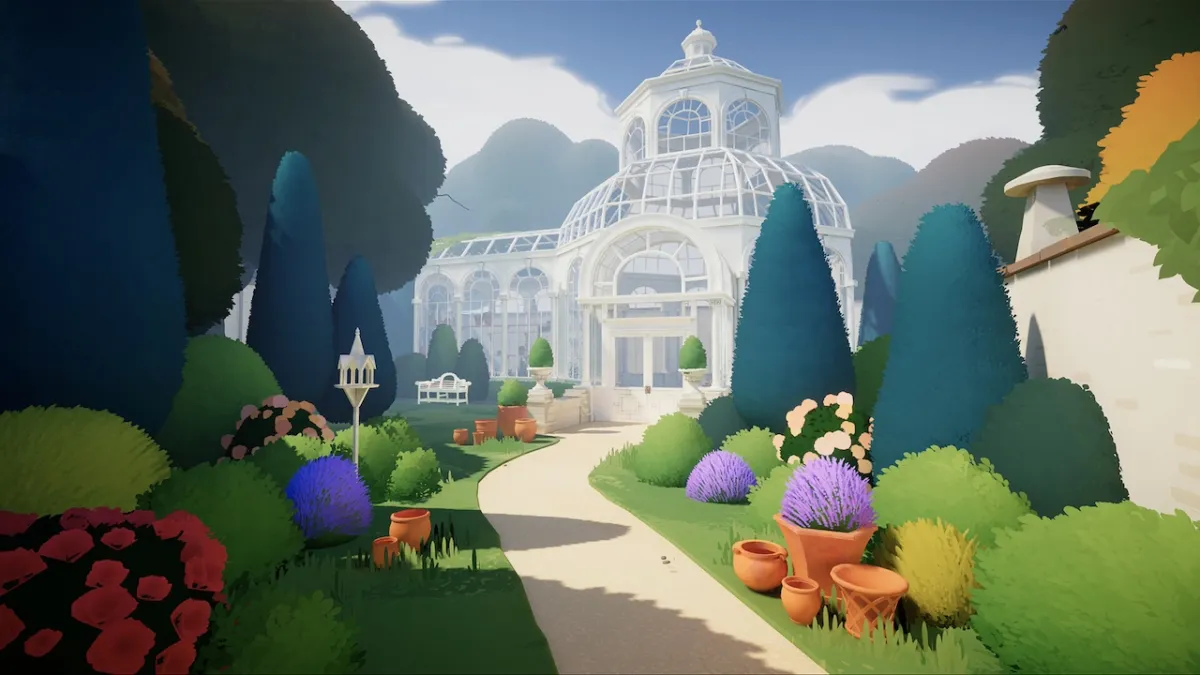“First Impressions” is a really weird thing for me to title this piece about Vampyr, because I’ve played it quite a bit more than that implies. Not enough to review it based on our “no reviews until completion” guidelines, and frankly, not enough to feel comfortable reviewing it. Apparently, 22 hours isn’t enough to figure out what I think about Vampyr.
It’s certainly enough to give you an idea of where my thoughts are going, though, and to talk about how it holds up on PC. Which, uh, is where I may have some rather unfortunate news. Vampyr isn’t outright bad on PC, but it’s absolutely a console port with some additional rough edges, some jank, and some optimisation issues.
Of course, this is a pre-release press build, and there’s apparently a day one patch happening, so there’s a chance some of this will be remedied by launch. I certainly hope so, but I can only really comment on what I’ve experienced.
First things first, the obligatory slew of menus:
Honestly, there’s not a great deal I can say about these.
The graphics options are all about as you’d expect; while there’s no specific option to turn off motion blur or anything, dropping Post-Process Quality to Low does remove most depth-of-field and assorted nonsense. Not bad. Resolution Scaling is also in if you want to make the game look much worse, although it’s almost certainly the option that’ll provide the biggest benefits to framerate.
That said, Vampyr doesn’t really look either bad or spectacular, regardless of the settings. There are noticeable differences when you see comparison screenshots, but when playing the game, there are only a few things you’re likely to notice – a few lower quality textures and a lack of anti-aliasing, mostly. (The below screenshots don’t have the resolution scaling adjusted.)
Side-by-side, though, you can see some bigger differences, most of which are atmospheric. With the settings turned down the traditional London fog and gloom is significantly reduced, there’s less incidental detail (like weeds growing through the cracks in the pavement), and you can actually see everything because depth-of-field isn’t getting in the way. But, uh, the latter can be individually removed, as noted, and Vampyr generally does a really good job of creating a dark and grim London plagued by both disease and vampires.
I’m running this on an i7-3820 with 16GB RAM and a GeForce GTX 1080 Ti, so you would probably expect me to not have any real framerate issues with Vampyr. This is mostly true: the game runs fine and is entirely playable, but then, it’s not a fast-paced action game so minor framerate blips don’t cause any issues. However, I’m not running at a constant 60 FPS.
Indoors, things are usually fine, and a mild drop in framerate when transitioning between the game’s zones is also understandable. Outside, with all graphical settings turned up to full, things run anywhere between about 40 FPS and 60 FPS depending on the specifics of the scene. The absolute lows are mostly the result of short drops lasting a few seconds rather than anything constant, though; Vampyr usually averages in the mid-to-high 50s at 1440p.
Lowering the graphical settings doesn’t change this overmuch, giving around 50 FPS as a new low instead. This worries me slightly in terms of optimisation: it doesn’t seem to be a particularly intensive game, after all. Fortunately, as noted, this isn’t a phenomenal-looking twitch-shooter, so minor blips like this don’t really do anything to make Vampyr difficult to play or any less enjoyable, especially because they mostly happen in the busier social districts of London where combat isn’t an option. Do note, again, that this is all running at 2560×1440, and it may well be significantly better optimised for 1080p.
On a mildly interesting note, GeForce Experience tells me that my optimal settings are actually to run Vampyr at 3620×2036 and have it scaled down to my native resolution. I gave this a shot. The framerate dips were greater, but again, things still remained entirely playable. Quickly spinning 180 degrees or walking into a busy screen would drop things down to 35 FPS or so for a moment, but then the game would catch up again.
Unfortunately, there are more problems troubling Vampyr‘s PC version, much like the Spanish Flu is the tip of the iceberg for the game’s recreation of 1918 London. Mouse and keyboard controls are one of these. Now, pretty much everything is redefineable, and 100% of my playtime has been with mouse/keyboard, so – again – these are annoying problems rather than utter game-breakers. Bear that in mind. I mean, I could complain about Q being the walk key (which is mildly annoying, because trying to hold that down while using WASD to sneak around behind someone and then hit F to sneak attack them can require some uncomfortable finger gymnastics) but I can just as easily redefine that, even if a “toggle to walk” button would’ve been nice.

Stuns start battle but leave any enemies within the immediate area disoriented, letting you drain them of some blood or get a few quick hits in. So yes, sneaking up on people has its advantages.
It might be an artifact of the occasional framerate swings making me think this, but at times I’ve been sure there’s some form of mouse smoothing going on, and finding a mouse sensitivity that didn’t feel horribly wrong took some time. But the bigger issue is in combat, where there’s one mechanic that basically just doesn’t work on mouse and keyboard.
In combat, once you tap CTRL to lock onto an enemy, you’ll pretty much always be able to see them and attack in their direction – especially useful against foes who can teleport around. If you want to swap targets, you move the mouse in the direction of the foe you want to lock onto. Simple.
Except aaargh, because this almost never works. Occasionally – like when Vampyr first taught me to do this – it will. But since then, I’d estimate it’s functioned maybe 10% of the time I’ve tried to use it. I’ve tried nudging the mouse gently. I’ve tried swinging the mouse so hard I’ve nearly flung it across the room. I’ve tried arcane chants and blood sacrifices. But mostly, I’ve just given up and resigned myself to the fact that I have to unlock from my current target manually, and then try to relock onto my intended target before I take too much damage. Or I guess I could plug in a gamepad, since everything is clearly designed around this, but that feels like giving in. I mean, the menus generally work really nicely with the mouse!

There are also occasions where the game appears to load in vastly lower-quality textures than it should, like with this poor chap here, who appears to be a mannequin.
And then there are the other bits of jank, which I rather doubt are limited to the PC version. Subtitles are riddled with typos. The camera, during conversations, occasionally picks the worst possible angle; I’ve had one in-depth discussion of the troubles facing London while staring at a close-up of the protagonist’s back (although this has happened a lot less since a rather large patch shortly after receiving the press version).
There are also a few very rare issues with the game logic, but that’s not entirely surprising considering Vampyr‘s scope. I managed to create a catastrophe in one district, and on going to survey my work (and hopefully repair the situation) I found a very definitely dead NPC standing in her usual spot in the social zone, alive and well, but non-interactive. After wandering into the havoc-stricken area and back out, the game seemed to remember she was meant to be dead and she vanished for good. I’ve only seen this happen on extremely rare occasions across 22 hours of play, though, and it’s never impacted the gameplay itself or bugged out a quest.
So the PC version is a port, and a bit of a rough one at that. Gamepad would probably be the suggested way to go for controls, and at the bare minimum, you’re going to have to deal with some bits and pieces like typos and occasional framerate drops. (It also does that horribly annoying thing where clicking to skip text winds up skipping the person’s entire series of lines rather than just whatever’s currently displayed in the on-screen subtitles, which is a good way to really upset me.)
But enough complaining. Let’s talk a bit about Vampyr itself, because I’ve played it for a good number of hours and I want to outline some thoughts, for me as much as for anyone else.
This is a terrible pun which I’m sure a billion other reviews are going to use, but Vampyr is biting off more than it can chew. While it sometimes works – and works gloriously – it often feels about as flawed as its port job.
You’re Jonathan Reid, an esteemed doctor returning from the frontlines of the war to London, when you’re rather unceremoniously turned into a vampire and dumped in a mass grave. And then the first person you encounter in your post-revival thirst for blood is your sister, which does not end well for her.
If tracking down your progenitor and coming to terms with being a vampire isn’t enough: the Spanish Flu is raging throughout London so a doctor’s work is never done, there’s a group of fanatical vampire hunters swarming the streets, and there are whisperings of some dark machinations in the shadows.
The most unique thing Vampyr has going for it is its levelling system. London is split into four districts, each of which has a social hub full of named characters with their own secrets – and any of these can be drained dry for a massive experience boost, at the cost of the district’s stability. Should the stability fall too low, the district itself will fall into chaos, apparently removing all vendors and quests from the region and making everything rather unpleasant should you try to head back there. Excellently, you get more XP from healthy and happy people than the sick and miserable, so even if you’re planning on being a total bastard it’s in your best interests to help these people out by curing their illnesses and completing their quests before you drag them off into a corner for a fatal kiss.
There’s even a touch of Ice-Pick Lodge’s excellent misery-’em-up Pathologic in there, as illnesses spread every time you rest, and choices you’ve made may heavily impact region stability – all of which has led to me dreading the night reports that come every time I return to a hideout to spend my experience. This is also definitely a Dontnod game rather than a BioWare RPG: even the best intentions can come back to bite you in the arse, as I rather painfully discovered.

Learn to dread things like this, and bear in mind that if you come across someone who needs rescuing, they probably won’t survive the night.
Earlier on, when talking about bugs, I mentioned I managed to create a catastrophe. This was absolutely unintentional. I thought it was in the best interests of the district and the people there. I was being nice. Instead it led to the closure of a social zone and the deaths of four named characters. After that, I’ve learned to fear pretty much every major decision I make, and remember that good intentions aren’t necessarily what will actually help.
But the downside to this is that these major occurrences are pretty rare, and right now, a lot of the sidequests seem almost inconsequential. There are hints of intrigue in there, but there’s barely any resolution to most of the things you find out about people (largely done by rummaging through their houses for letters), except to possibly make you feel better about murdering them for a large XP boost.
Also, to prevent you from utterly derailing the plot, you’re limited in terms of who you can murder at any given time. You need a certain level of Mesmerise to convince citizens to walk into a dark alley with you, and this seems to be improved by proceeding through the main questline. So no, you can’t immediately go and murder the most prominent NPCs everywhere as soon as you like.

Vampires have a sort of Batman vision, letting you see people through walls and analyse the quality of their blood. Useful for picking targets, not walking into ambushes, and finding out where someone you want to talk with has buggered off to.
On the one hand, I like the idea of this experience system – that playing the game as someone trying to resist your bloodlust makes it harder, because you’re essentially turning down large amounts of experience. But combat is rarely difficult anyway, and the biggest change is the amount of damage you do, so – realistically – draining people of their blood just means that fights are less irritating because enemies feel less like damage sponges. As a specific example, I’ve killed bosses more than double my level without taking a hit, but it was an absolute slog. And when few of these named NPCs make much of an impact and have little personal evolution, it’s hard to care.
Combat itself is semi-rote action-RPG stuff, in terms of swinging away at enemies and trying to dodge or parry their own attacks. However, as a vampire, you have abilities powered by blood (gained by using certain weapons in combat, stunning foes so that you can drink from them, or eating rats). You can launch spears of blood at enemies, or summon clouds of exploding shadows, or rip them apart with claws. You can summon shields of blood or teleport next to ranged foes to strike instantly. Enemies have both a health bar and a stun bar, and as noted, the draining the latter lets you either drink some of their blood or unleash a few hits without fear of reprisal.
But it’s all been done significantly better in countless other games, and it isn’t particularly interesting or challenging on its own. Fights against huge foes who’ve been amped up throughout plot events inevitably end in disappointment as I do the exact same thing I’ve done against other enemies, only the fight lasts several minutes instead of 30 seconds because I’m horribly underlevelled.

Pfft. Just because you’re 20 levels higher than me and appear sturdier than most of these walls doesn’t mean you can tell me what to do.
Basically, it has some nice combat ideas that aren’t particularly well-implemented, and some absolutely smashing story/NPC/consequence ideas that aren’t particularly well-implemented. I kinda wish Dontnod had stuck to doing one or the other. I also wish they’d resisted the urge to delve into cringe-inducing dialogue every now and then, but even Life is Strange did that, so I can accept this particular foible.
Still, Vampyr has a lovely aesthetic – the music in particular is excellent at evoking a gothic London atmosphere – and the moments where your decisions catch up with you are great. There are some marvellous set-pieces, although on a first playthrough (with only one autosave slot) it’s very hard to tell how much my decisions in these scenes actually matter. I have a very, very strong suspicion that some of them are emotively milking me by making me think something’s my fault when the outcome is already set in stone.
This is partly why I still don’t feel able to review Vampyr, right now. I need to finish it to see how much some of these things matter, and ideally I want to start a second playthrough to try things differently. More appraisal is needed before I can tell if it’s a diamond with some exceptionally rough edges, or if it’s a cheap piece of tacky plastic trying to be more than it is.






















